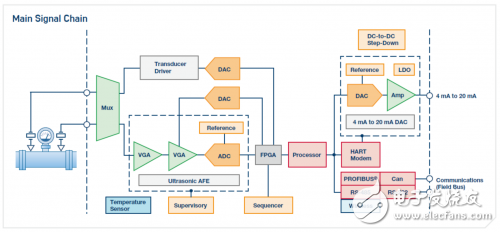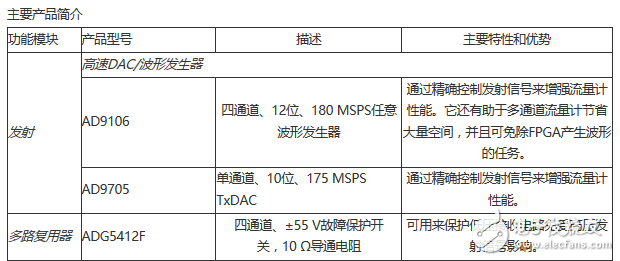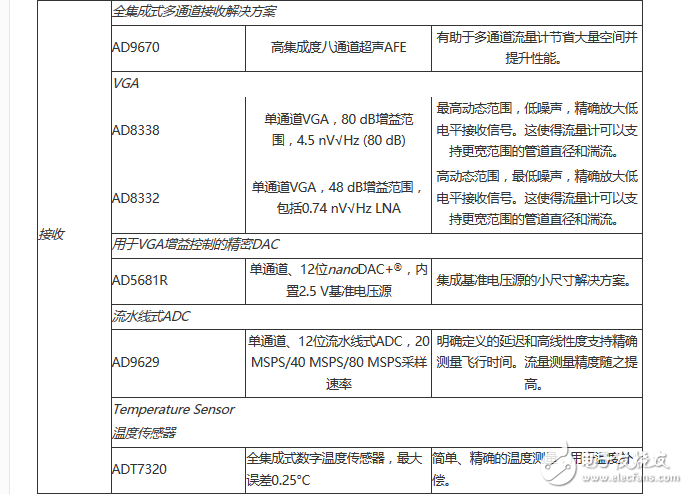Industrial ultrasonic flowmeter system principle
Ultrasonic flow meters are volumetric flow meters that measure the flow of liquids, gases or vapors. They are commonly used in the oil and gas, pharmaceutical, food and beverage industries. The flow meter uses flow time or Doppler technology to measure flow.
Flow meters using the time-of-flight principle have one or more pairs of sensors. The flow time of the ultrasonic waves in both directions is measured, from which the flow rate can be calculated. This technique typically requires relatively pure media and should have a particle size of less than 5%. It can achieve better than 1% accuracy.
When the Doppler method is employed, the ultrasonic pressure waves are reflected by moving particles in the fluid. The velocity of these particles produces a Doppler shift in the echo signal, from which the flow can be determined. In practical applications, the accuracy of this measurement method usually does not exceed 3%.
Ultrasonic flow meters include power supplies, sensor excitation, signal conditioning, analog-to-digital converters, processors, displays, keyboards, and a variety of communication options (such as 4 mA to 20 mA, HART, RS-485, wireless, etc.).
Industrial Ultrasonic Flowmeter System Design Considerations and Key Challenges
This solution guide focuses on ultrasonic flow meters based on the time-of-flight principle. The following signal chains are best suited for applications that require higher performance, especially for applications with multiple pairs of sensors. In addition to the need to achieve higher measurement accuracy, these designs often have quite strict space constraints.
Liquid ultrasonic flowmeters typically use a 1 MHz ultrasonic frequency. System accuracy is directly related to the accuracy of upstream and downstream time-of-flight measurements. Therefore, FPGAs are typically used to control the timing of transmitting and receiving pulses. In addition, any possible deviations in the transmit and receive signal path delays must be taken seriously.
Another important aspect is that the receive signal chain requires high gain. This gain needs to be dynamically adjustable to accommodate different flow conditions and pipe sizes, typically 60 dB or higher, requiring a low noise receive signal chain path.
The sensor excitation can be on/off or a waveform generator. Waveform generators typically add cost and complexity, but users can better control the output signal for a more accurate and robust flowmeter design.
Signal processing requires extensive filtering and FFT analysis to determine the exact timestamp of the received signal, which can be done with a DSP processor that also supports the required interface protocol.

Main Singnal Chain
Main signal chain



Boiler Pressure Gauge,Inflatable Pump Pressure Gauge,Mini-Sized Theromanometer Pressure Gauge,Gauge Pressure
ZHOUSHAN JIAERLING METER CO.,LTD , https://www.zsjrlmeter.com
